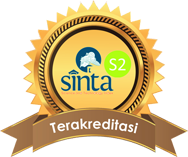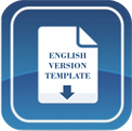The Effectiveness of E-Module on Buffer Solutions to Improve Students' Higher-Order Thinking Skills and Self-Regulated Learning
DOI:
https://doi.org/10.15575/jtk.v6i2.13772Keywords:
buffer solution, e-module, HOTS, learning cycle 7E, self-regulated learningAbstract
This study aims to determine the difference between Higher Order Thinking Skills (HOTS) and Students Self Regulated Learning (SRL) before and after using e-module based on the 7E (elicit, engage, explore, explain, elaborate, evaluate, and extend) learning cycle on the buffer solution material, and to determine the percentage of its effectiveness. The research use a quasi experiment with one-group pretest-posttest design. The subjects of this research were students of natural science 11th grade in one of senior high schools in Yogyakarta. The instrument used were test in the form of HOTS pretest-posttest description question and non-test in the form of self-regulated learning questionnaire. The data analysis technique used is Hotteling's T2 test. The results showed that the significance value was 0.000 < = 0.05, then H0 was rejected. There were differences in students' HOTS and SRL before and after using e-module based on the 7E learning cycle. The effectiveness of using e-module show by HOTS and SRL simultaneously (36.8%), HOTS (25.2%), and SRL (20.5%).
References
Açişli, S., Yalçin, S. A., & Turgut, Ü. (2011). Effects of the 5E learning model on students’ academic achievements in movement and force issues. Procedia - Social and Behavioral Sciences, 15, 2459–2462. https://doi.org/10.1016/j.sbspro.2011.04.128
Adam, R. J., & Khoo, S. (1996). Acer quest version 2.1. Camberwell, Victoria: The
Australian Council for Educational Research.
Aiken, L. R. (1999). Personality assessment: methods and practices. Toronto: Hogrefe & Huber Publishers.
Aji, R. H. S. (2020). Dampak covid-19 pada pendidikan di Indonesia: Sekolah, Keterampilan, dan Proses Pembelajaran. Jurnal Sosial & Budaya Syar-I, 7(5), 395–402. https://doi.org/10.15408/sjsbs.v7i5.15314
Anderson, L. W., & Krathwohl, D. R. (2001). A taxonomy for learning, teaching, and assessing; a revision of bloom’s taxonomy of educational objectives. New York: Addison Wesley Longman.
Azraai, O., & Talib, O. (2015). Tahap kefahaman asas kimia organik pelajar kolej matrikulasi aliran teknikal. Jurnal Pendidikan Sains & Matematik Malaysia, 5(2), 86–97. Retrieved from https://ejournal.upsi.edu.my/index.php/JPSMM/article/view/2153
Balta, N., & Sarac, H. (2016). The effect of 7E learning cycle on learning in science teaching: a meta-analysis study. European Journal of Educational Research, 5(2), 61–72. https://doi.org/10.12973/eu-jer.5.2.6
Bilgin, I., & Geban, O. (2006). The Effect of cooperative learning approach based on conceptual change condition on students’ understanding of chemical equilibrium concepts. Journal of Science Education and Technology, 15(1), 31–46. https://doi.org/10.1007/s10956-006-0354-z
Bloom, B. S. (1956). Taxonomy of educational objectives. Vol. 1: Cognitive domain. New York: McKay.
Boone, W. J., Staver, J. R., & Yale, M. S. (2014). Fit. In Rasch analysis in the human sciences, 159-189. Springer, Dordrecht. https://doi.org/10.1007/978-94-007-6857-4_8
Brookhart, S. M. (2010). How to assess higher order thinking skills in your classroom. United States of America: ASCD Member Book.
Budiarti, F., Nuswowati, M., & Cahyono, E. (2016). Guided inquiry berbantuan e-Modul untuk meningkatkan keterampilan berpikir kritis. Journal of Innovative Science Education, 5(2), 144–151. Retrieved from https://journal.unnes.ac.id/sju/index.php/jise/article/view/14264/7795
Burrows, N. L., & Mooring, S. R. (2015). Using concept mapping to uncover students' knowledge structures of chemical bonding concepts. Chemistry Education Research and Practice, 16(1), 53-66. https://doi.org/10.1039/C4RP00180J
Celikten, O., Ipekcioglu, S., Ertepinar, H., & Geban, O. (2012). The Effect of the Conceptual Change Oriented Instruction through Cooperative Learning on 4th Grade Students’ Understanding of Earth and Sky Concepts. Science Education International, 23(1), 84–96. Retrieved from https://eric.ed.gov/?id=EJ975551
Cooper, M. M., Grove, N., Underwood, S. M., & Klymkowsky, M. W. (2010). Lost in Lewis structures: an investigation of student difficulties in developing representational competence. Journal of Chemical Education, 87(8), 869–874. https://doi.org/10.1021/ed900004y
Fernandez, C., Holbrook, J., Mamlok-Naaman, R., & Coll, R. K. (2013). How to teach science in emerging and developing environments. In Teaching Chemistry–A Studybook: SensePublishers.
Gliem, J. A., & Gliem, R. R. (2003). Calculating, interpreting, and reporting Cronbach’s alpha reliability coefficient for Likert-type scales. [Conference presentation]. Midwest Research-to-Practice Conference in Adult, Continuing, and Community Education, Columbus, Ohio : Ohio State University. https://scholarworks.iupui.edu/handle/1805/344
Hardiansyah, D., Rusnayati, H., & Waslaluddin. (2013). Penerapan model pembelajaran learning cycle 7E untuk meningkatkan keterampilan berpikir kritis dan penguasaan konsep siswa SMA. Jurnal Pengajaran Fisika Sekolah Menengah, 5(1), 28–33. Retrieved from https://www.researchgate.net/publication/298323380_Penerapan_Model_Pembelajaran_Learning_Cycle_7E_untuk_Meningkatkan_Keterampilan_Berpikir_Kritis_dan_Penguasaan_Konsep_Siswa_SMA
Hardinita, E., & Muchlis. (2015). Penerapan model pembelajaran pembelajaran cycle 7E untuk meningkatkan keterampilan berpikir kritis siswa pada materi pokok larutan penyangga kelas XI MIA SMA negeri 1 Puri Mojokerto. UNESA Journal of Chemical Education, 4(3), 486–494. Retrieved from https://jurnalmahasiswa.unesa.ac.id/index.php/journal-of-chemical-education/article/view/13284/12194
Harta, J., Rasuh, N. T. R., & Seriang, A. (2020). Using HOTS-based chemistry national exam questions to map the analytical abilities of senior high school students. Journal of Science Learning, 3(3), 143–148. https://doi.org/10.17509/jsl.v3i3.22387
Hendrian, Rohaeti, & Sumarmo. (2017). Hard skills and soft skills of student mathematics. Bandung: PT Refika Aditama.
Istuningsih, W., Baedhowi, B., & Sangka, K. B. (2018). The effectiveness of scientific approach using e-module based on learning cycle 7E to improve students’ learning outcome. International Journal of Educational Research Review, 3(3), 75–85. https://doi.org/10.24331/ijere.449313
Kemendikbud. (2018). Peraturan menteri pendidikan dan kebudayaan republik Indonesia nomor 69 tahun 2013 tentang kerangka dasar dan struktur kurikulum sekolah menengah atas/madrasah aliyah. Retrieved from https://biologi.fkip.uns.ac.id/wp-content/uploads/2013/08/PDK-2013-%0A69-Kerangka-Dasar-Kurikulum-Kompetensi-SMA.pdf%0A
Khoiriah, Jalmo, T., & Abdurrahman. (2019). Effectiveness of assessment instruments higher order thinking skills to grow self regulated learning students junior high school. The Online Journal of New Horizons in Education, 9(2), 106–115. Retrieved from https://www.tojned.net/journals/tojned/articles/v09i02/v09i02-03.pdf
Kusumawardani, R., Suhaiya, & Muflihah. (2019). Difference in learning outcomes between high school student taught using learning cycle 5E and learning cycle 7E on colloid subject. 2nd Educational Sciences International Conference (ESIC), 127-128. https://doi.org/10.2991/assehr.k.200417.028
Maratusholihah, N. F., Rahayu, S., & Fajaroh, F. (2017). Analisis miskonsepsi siswa sma pada materi hidrolisis garam dan larutan penyangga. Jurnal Pendidikan, 2(7), 919–926. https://doi.org/10.17977/jptpp.v2i7.9645
Orgill, M., & Sutherland, A. (2008). Undergraduate chemistry students’ perceptions of and misconceptions about buffers and buffer problems. Chemistry Education Research and Practice, 9, 131–143. https://doi.org/10.1039/ b806229n
Othman, A., Talib, O., & Ibrahim, D. A. (2015). Analisis dokumen silabus kimia organik matrikulasi berdasarkan taksonomi bloom. Jurnal Kurikulum & Pengajaran Asia Pasifik, 3(3), 1–11. Retrieved from https://juku.um.edu.my/index.php/JUKU/article/view/8162/5645
Pallant, J. (2007). SPSS survival manual. Australia: Open University Press.
Paris, S. G., & Paris, A. (2001). Classroom applications of research on self regulated learning. Educational Psychology, 36(2), 89–101. https://doi.org/10.1207/S15326985EP3602_4
Sahin, A., Ayar, M. C., & Adiguzel, T. (2014). STEM related after-school program activities and associated outcomes on student learning. Educational Sciences: Theory & Practice, 14(1), 309–322. https://doi.org/10.12738/estp.2014.1.1876
Salbiah, M. H., Ruhizan, M. Y., & Rosalinda, R. (2015). A meta-analysis study on the effectiveness of higher order thinking skills (HOTS) based learning in science and mathematics subjects. Proceeding: 7th International Seminar on Regional Education, 1334–1349. Retrieved from https://isre.prosiding.unri.ac.id/index.php/ISRE/article/view/3247/3159
Sanaky, H. A. (2013). Media pembelajaran interaktif-inovatif. Yogyakarta: Kaukaba Dipantara.
Saraswati, S., Linda, R., & Herdini. (2019). Development of interactive e-module chemistry magazine based on kvisoft flipbook maker for thermochemistry materials at second grade senior high school. Journal of Science Learning, 3(1), 1–6. https://doi.org/10.17509/jsl.v3i1.18166
Sauki, N. I. M., & Talib, O. (2020). SLR: The implementations of problem-solving method using polya, 5E, 7E method and its challenge to cope with 21st century learning. International Journal of Academic Research in Business & Social Sciences, 10(6), 1046–1060. https://doi.org/10.6007/IJARBSS/v10-i6/7471
Sintema, E. J. (2020). Effect of covid-19 on the performance of grade 12 students: Implications for STEM education. EURASIA Journal of Mathematics, Science and Technology Education, 16(1). https://doi.org/10.29333/ejmste/
Smith, J. K. (2005). Reconsidering reliability in classroom assessment and
grading. Educational Measurement: Issues and Practice, 22(4).
https://doi.org/10.1111/j.1745-3992.2003.tb00141.x
Sornsakda, S., Suksringarm, P., & Singseewo, A. (2009). Effects of learning environmental education using the 7E-learning cycle with metacognitive techniques and the teacher’s handbook approaches on learning achievement, integreated science process skill and critical thinking of mathayomsuksa 5 students with different learning achievement. Pakistan Journal of Social Sciences, 6(5), 297–303. Retrieved from https://www.medwelljournals.com/abstract/?doi=pjssci.2009.297.303
Tacoshi, M. M., & Fernandez, C. (2014). Knowledge of assessment : an important component in the pck of chemistry teachers. Problems of Education in the 20th Century, 62, 124–147. Retrieved from http://oaji.net/articles/2015/457-1423570850.pdf
UNESCO. (2009). World Conference on Higher Education: the New Dynamics of Higher Education and Research for Societal Change and Development; communiqué. (https://unesdoc.unesco.org/ark:/48223/pf0000183277), accessed 17 February 2021.
Voithofer, R. (2005). Designing new media education research: The materiality of data, representation, and dissemination. Educational Researcher, 34(9), 1–3. https://doi.org/10.3102/0013189X034009003
Warburton, K. (2003). Deep learning and education for sustainability. International Journal of Sustainability in Higher Education, 4(1), 44–56. https://doi.org/https://doi.org/10.1108/14676370310455332
Wickramasinghe, N. C., Steele, E. J., Gorczynski, R. M., Temple, R., Tokoro, G., Wallis, D. H., & Klyce, B. (2020). Growing evidence against global infection-driven by person-to-person transfer of covid-19. Virol Curr Res, 4(1). Retrieved from https://www.theothersideofmidnight.com/wp-content/uploads/2020/04/Corona2.pdf
Wolters, C. A., Pintrich, P. R., & Karabenick, S. A. (2009). Assessing academic self-regulated learning. The Search Institute Series on Developmentally Attentive Community and Society, 251–270. https://doi.org/10.1007/0-387-23823-9_16
Zimmerman, B. J. (1989). A Social Cognitive View of Self-regulated Learning. Journal of Educational Psychology, 81(3), 329–339. https://doi.org/10.1037/0022-0663.81.3.329
Zimmerman, B. J. (1990). Self-regulated learning and academic
achievement: an overview. Educational Psychologist, 25(1), 3–17. https://doi.org/10.1207/s15326985ep2501_2
Zumbrunn, S., Tadlock, J., & Roberts, E. (2011). Encouraging self regulated learning in the classroom: a review of the literature. Virginia: Metropolitan Educational Research Consortium (MERC).
Downloads
Published
How to Cite
Issue
Section
Citation Check
License
Authors who publish with this journal agree to the following terms:
- Authors retain copyright and grant the journal right of first publication with the work simultaneously licensed under a Creative Commons Attribution-ShareAlike that allows others to share the work with an acknowledgement of the work's authorship and initial publication in this journal.
- Authors are able to enter into separate, additional contractual arrangements for the non-exclusive distribution of the journal's published version of the work (e.g., post it to an institutional repository or publish it in a book), with an acknowledgement of its initial publication in this journal.
- Authors are permitted and encouraged to post their work online (e.g., in institutional repositories or on their website) prior to and during the submission process, as it can lead to productive exchanges, as well as earlier and greater citation of published work (See The Effect of Open Access).








